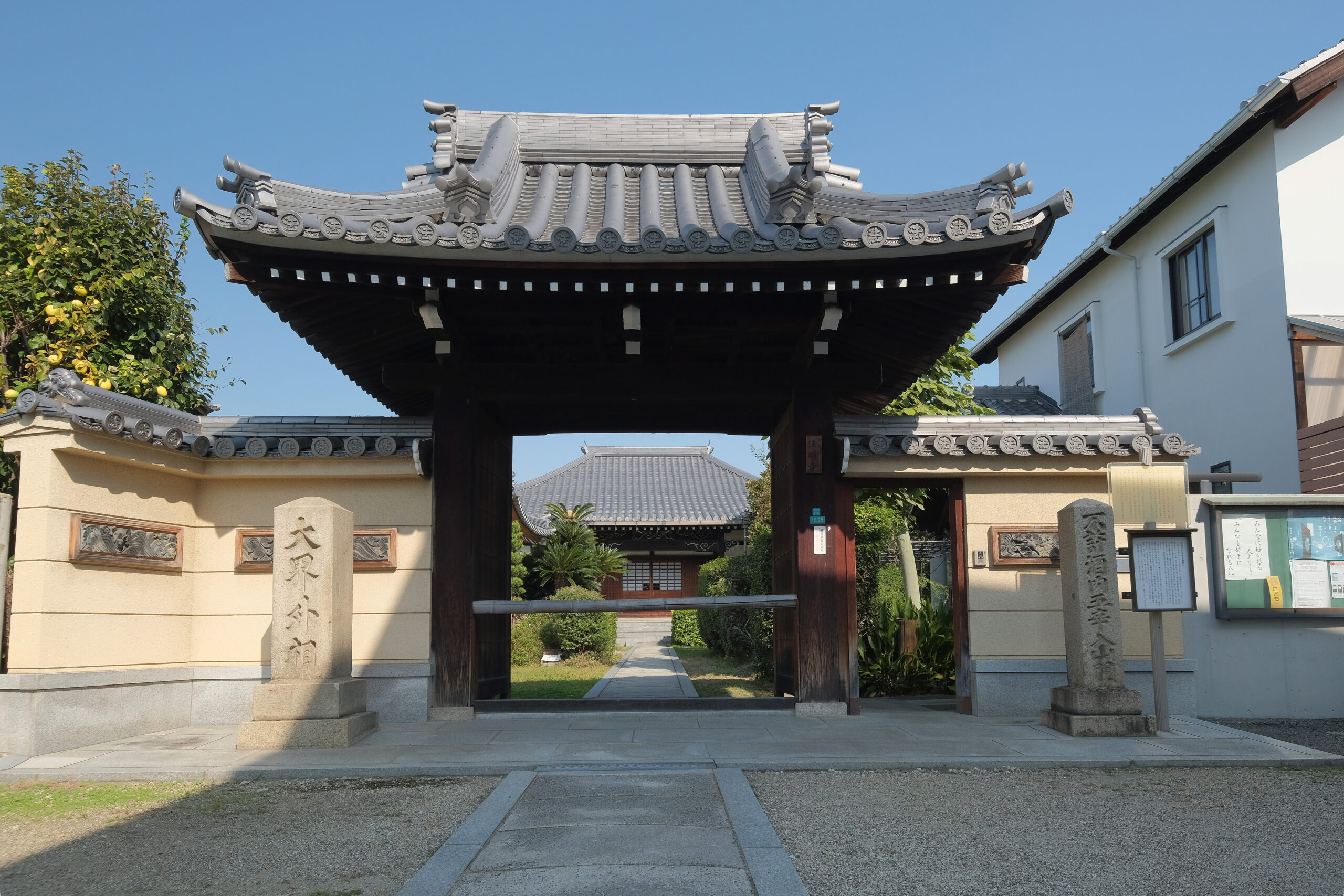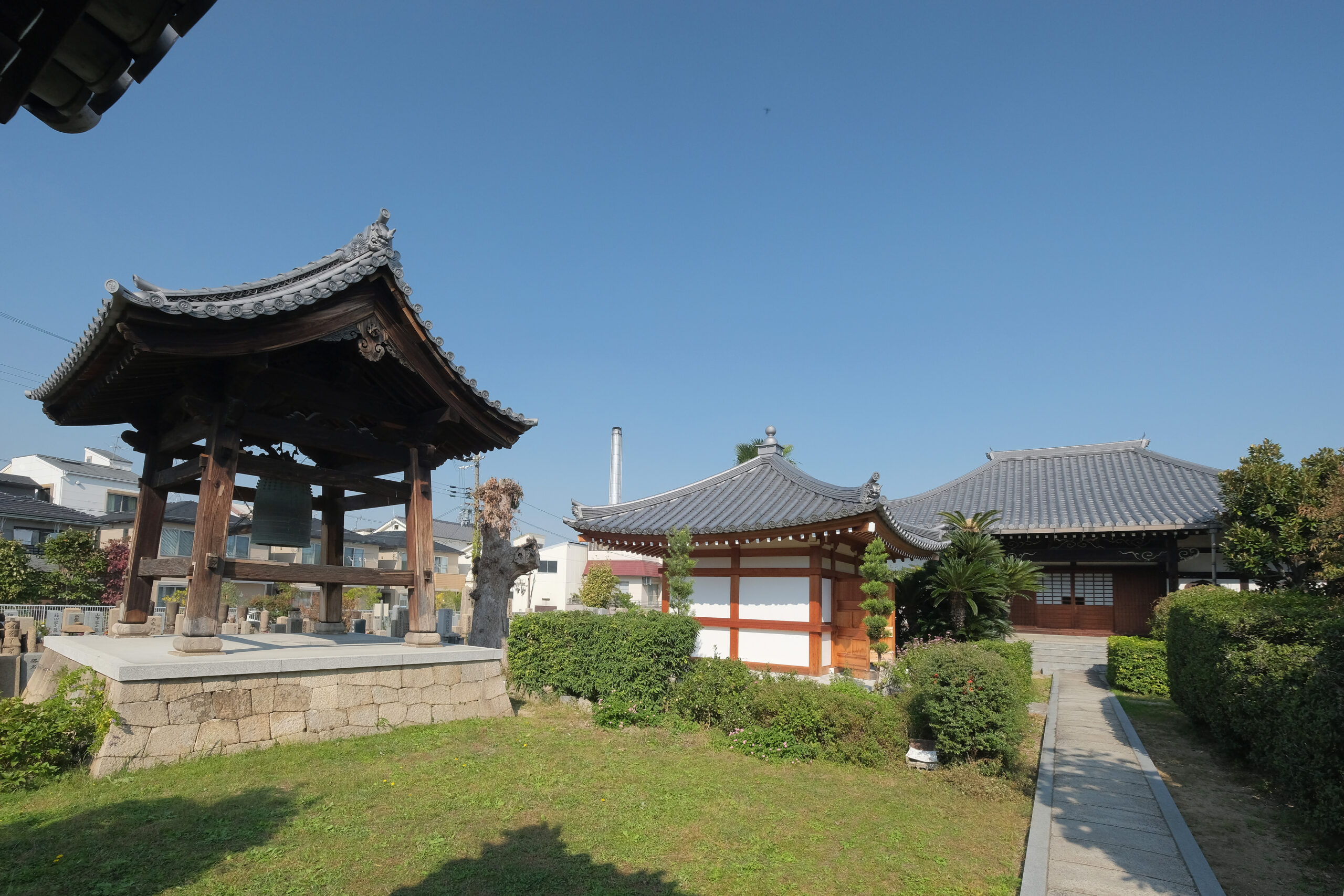About
The
Fukae
Area
About the Fukae Area

Kasanui-no-shima in Ancient Texts
After passing over Mt. Shihatsuyama, you can see the small boats rowing around Kasanui-no-shima.
This poem composed by Takechino Kurohito is included in the Manyoshu, the oldest existing collection of ancient Japanese poetry. Mt. Shihatsuyama is thought to be close to present-day Sumiyoshi, with Kasanui-no-shima referring to the town of Fukae. It is believed that the author wrote this poem while viewing the ancient town of Kasanui-no-shima and its circling boats while on top of the mountain.
The history of Kasanui-no-shima dates back to Kasanui Village in Nara nearly 2,000 years ago, where the local people crafted sedge hats and other ritual implements to offer to the gods. However, the people of this village left Nara in search of a place rich in sedge and discovered a small island with an abundance of this high-quality grass. This island become known as Kasanui-no-shima (“hat-weaving island”) and over time developed into modern-day Fukae.
A Transportation Hub and a Town of Sedge Craftsmanship

After leaving Osaka, the next stop is Tamatsukuri; if you want to buy a hat, Fukae is the place to go.
As the region’s economy and culture flourished, people traveled more frequently. Fukae was situated on the border between Settsu and Kawachi provinces with a major highway passing through, making the town a crossroads. In the early modern period, the increase in popularity of nearby Ise as a pilgrimage site brought more travelers passing through Fukae, at peak nearly 50,000 per month. In addition to providing sun and rain protection, Fukae’s sedge hats were also believed to ward off evil spirits. As a result, shops lined the town’s streets and travelers bought the hats to pray for a safe journey.

This bustling scene was depicted in a famous collection of woodblock prints called “Illustrations of Famous Places in Settsu Province,” and an old folk song includes the lyrics “After leaving Osaka, the next stop is Tamatsukuri; if you want to buy a hat, Fukae is the place to go.”
Historic Temples and Shrines

Fukae is home to several temples and shrines that have survived war as well as waves of anti-Buddhist violence. These include Homyoji and Shingyoji temples, which were founded by medieval monks, and Fukae Inari Shrine, which is closely associated with the Kasanui clan and is a designated historic site of the city of Osaka. These structures serve as a testament to Fukae’s rich history.
-
Homyoji Temple
 Homyoji Temple was founded by the monk Homyo Shonin in 1318. The temple’s main hall, kuri (living quarters), bell tower, and yakui-mon gate were built from the end of the 17th century to the end of the 18th century, and are registered as national Tangible Cultural Properties. The main hall and bell tower are particularly noteworthy examples of Jodo Shu temple architecture from the late 17th to early 18th centuries. The temple’s current bell was recast in 1980 and features patterns designed by Kakutani Ikkei, a craftsman who was designated a living national treasure during his lifetime.
Homyoji Temple was founded by the monk Homyo Shonin in 1318. The temple’s main hall, kuri (living quarters), bell tower, and yakui-mon gate were built from the end of the 17th century to the end of the 18th century, and are registered as national Tangible Cultural Properties. The main hall and bell tower are particularly noteworthy examples of Jodo Shu temple architecture from the late 17th to early 18th centuries. The temple’s current bell was recast in 1980 and features patterns designed by Kakutani Ikkei, a craftsman who was designated a living national treasure during his lifetime. -
Fukae Inari Shrine
 Fukae Inari Shrine is said to have its origins when ancestors of the Kasanui clan enshrined Shitateruhime-no-Mikoto, a legendary figure in ancient Japanese texts. The Kasanui clan also enshrined the god of blacksmithing, leading Fukae Inari Shrine to be also called Imono-mioya (“great ancestor of metal casting”) Shrine. There are also stone monuments designated as historic sites by Osaka Prefecture and monuments engraved with poems from the Manyoshu on the grounds.
Fukae Inari Shrine is said to have its origins when ancestors of the Kasanui clan enshrined Shitateruhime-no-Mikoto, a legendary figure in ancient Japanese texts. The Kasanui clan also enshrined the god of blacksmithing, leading Fukae Inari Shrine to be also called Imono-mioya (“great ancestor of metal casting”) Shrine. There are also stone monuments designated as historic sites by Osaka Prefecture and monuments engraved with poems from the Manyoshu on the grounds. -
Shingyoji Temple
 Shingyoji is a temple in the Jodo-Shinshu sect of Buddhism founded by head priest Rennyo during the Meio era (1492-1501). The current main hall was built in 1832 and is registered as a national Tangible Cultural Property as a part of the historical landscape of the Fukae area.
Shingyoji is a temple in the Jodo-Shinshu sect of Buddhism founded by head priest Rennyo during the Meio era (1492-1501). The current main hall was built in 1832 and is registered as a national Tangible Cultural Property as a part of the historical landscape of the Fukae area.
Historic Floods in the Fukae Area

Do not forget danger even in times of peace, for that is the way to ensure lasting peace…… Let this be a deep warning to you.
In June and July of 1885, Osaka was hit by a series of storms and floods that caused widespread damage and nearly flooded the entire city. Fukae was also severely affected by the disaster. In the aftermath of the flood, residents of Fukae built dankura (raised storehouses) with stone walls to protect their belongings from future floods. A stone monument was also erected to commemorate the disaster and to remind future generations of the devastation it caused. The monument is inscribed with the following words: “Do not forget danger even in times of peace, for that is the way to ensure lasting peace…… Let this be a deep warning to you.” This message from the people of Fukae, who were struck by disaster nearly 140 years ago, is a reminder to us all to be prepared for the unexpected.
Fukae Marugoto Museu
